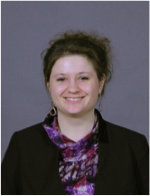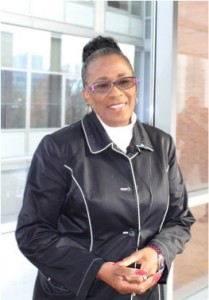1. Pay attention to the lighting of room you are in.
Lighting can affect your footage significantly. Be aware of lighting especially if you are filming inside a building. Sometimes it is a good idea to bring some extra set lights with you so that your footage is lit correctly and you get the look you want.
2. Make sure your audio equipment is recording what you want.
Make sure the microphones connected to the camera are not picking up unintended sounds. It’s a good idea to check the volume of the recording to make sure that your audio is being recorded at a sound level. To do this listen to the audio through a pair of headphones that you connect to the camera. Have someone speak into the microphone while you listen. It is common to have this person say “test, test, test,” or “check 1, 2, 3” until you are confident that the audio is loud enough to hear, without being so loud that it cuts out on certain words. If the audio is cutting out, you will see the sound level bar go into the red and the voice will sound distorted. Turn down your volume if this happens. Also, consider turning off things that make ambient room noise – window air-conditions for example. A good thing to remember is: if you can hear it in your headphones, you will be able to hear it in your recording.
3. Plan out what shots you want for your video beforehand.
It’s important to plan out shots before you begin to film. Consider drawing images of the shots that you would like to capture. Videographers refer to this process as storyboarding. The more you map out what you plan to record, the more likely you are to capture the shots you need.
4. Learn to control your tripod.
Make sure you know how to move your tripod before filming. If the screws on the tripod are too tight, it can hard to move the camera while filming which can lead to the recording being negatively affected.
5. If something doesn’t the record the way you want, there is still hope!
If your recording doesn’t go 100% perfectly, don’t fret. During the editing stage, it is possible to fix many issues that may arise during recording. Editing programs such as iMovie and Adobe Premiere can allow people to adjust lighting, color and sound issues. With this being said, don’t fall into the trap of “we can fix it in post.” Just like your favorite dish, the quality of the ingredients included, along with the chef’s skill will determine how great it ultimately tastes. You might be able to save the dish with salt and pepper if it isn’t properly prepared (fixing it in a post), but it will never be as good as it could have been if you would have taken the time to plan and execute correctly during the cooking process (production.)




 It’s always important that production equipment such as cameras, microphones and batteries are prepared before you plan to shoot. It’s easy to run into trouble is a battery wasn’t charged for instance. The best practice is to lay out all of the equipment you will need for your production the night before, and do a test run to make sure everything is working as expected. Also, don’t be afraid to throw in extra batteries and memory cards. They don’t take much space, and it is always better to have more than you need than not enough.
It’s always important that production equipment such as cameras, microphones and batteries are prepared before you plan to shoot. It’s easy to run into trouble is a battery wasn’t charged for instance. The best practice is to lay out all of the equipment you will need for your production the night before, and do a test run to make sure everything is working as expected. Also, don’t be afraid to throw in extra batteries and memory cards. They don’t take much space, and it is always better to have more than you need than not enough.